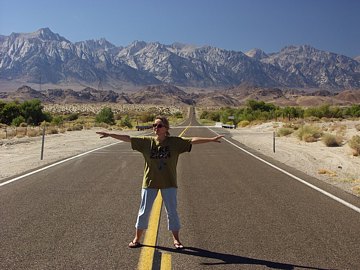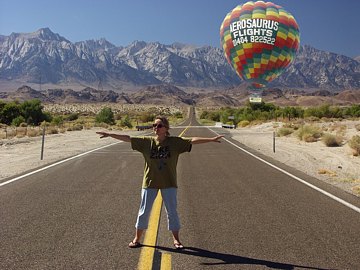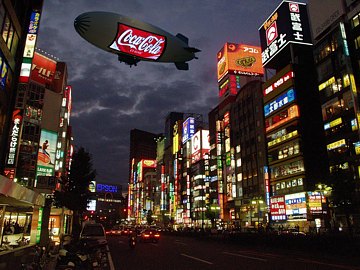

or to Bits and Pieces.
|
geeCam: Free Cameras for the Masses The First Real Revolution in Digital Camera Technology |


|
Back to the Nitty-Gritty section, or to Bits and Pieces. |
|
This is the end of the world as we know it. In two weeks or so the photographic industry will be shaken like never since Kodak introduced the roll film 120 years ago. The information I'm presenting here is based on a single leaked document (I expect some heads to roll); it may be in some places incomplete or distorted (neither Google or BabelFish are good translating from Japanese); nevertheless, I feel obliged to share this information with you, as the photography will never be the same.
While I've never signed a non-disclosure agreement, and while the document was fetched from a publicly accessible server directory on the Internet, I decided not to include any company and individual names. Anyway, in a few days everything will be in the daylight. Technical note: Some Web link checkers (for example, the Xeno Link Sleuth) will find orphan files on Web sites, i.e., the ones stored there, but not linked to from other documents. While the document may seem hidden, it can be easily found and accessed by a knowledgeable person. The few examples I'm including come from the early pre-production phase, therefore they may be not representative of the results delivered by the final product. How come: really free? The geeCam line of cameras will be paid for by advertising, very much like Google search is. At the first glance there is a difference between a free service and free hardware, but these two are more similar than it may seem. Here is how I understood the underlying principles, with the information gathered from a translation of the original Japanese document. The geeCam cameras will either be given away (through schools, clubs, church organizations and such), or sold at a nominal fee (close to five or ten dollars) by retailers. What really pays for the whole effort is PTAS, or Precision-Targeted Advertising System which will place advertising contents at various stages of the process:
|
| 
| 
|
An example of how SCS works. At left, original, "raw" image, as would be captured by an obsolete camera. At right, how it will come out of geeCam . Clearly, the image has more exciting contents, in addition to improved, more balanced, composition.
|
| Who pays for the commercial contents placed on your preview screen or in your pictures? The same people who pay Google for the Google Ads on many Web sites as well as in Google search result pages. Those ads are already targeted: when you do a search for, say, home prices eastern Nevada, you will see advertising of local real estate agents, developers, and mortgage brokers. If you search for electron scanning microscope, you will see a entirely different advertising contents. Companies pay Google for placing their ads depending on selected keywords; it is unlikely that you will find Kraft Foods paying for any of the keywords in those two searches. The company behind geeCam teamed up with a major Internet Search partner and with a number of cellular phone service providers, and this is when things start working together. First, a major Internet search partner? Well, you know who that may be, especially that Google already has a very efficient keyword/subject bidding system in place. Second: cell phone companies? Yup, the camera will not only know where the picture is being taken (based on the phone repeater ID), but it will also update and tailor the commercial contents based on the location, time, and some other factors. This boils down to a three-stage process, all of which happens automatically (perhaps the first time you turn the camera on in a new location? I'm not sure about this):
An incredibly precise targeting system, and much of that precision comes from ICUP, Individual Camera User Profile, another new and unique development. Individual Camera User Profile We've already seen some major makers using face recognition technologies, or (like Nikon) databases of thousands of images analyzed to provide smart exposure settings. ICUP logically extends these solutions, and by a far margin. Say, you are taking lots of cat and dog pictures. ICUP will spot that, and update your ICUP profile. This will increase the probability of cat and dog food advertising showing up when you use the camera. Lots of outdoors landscapes? We will find some hiking gear for you. Lots of bikini beach pictures shot at the longest focal length? Everything indicates you are a healthy male; probably you will like to see some of our special ads? This is not limited to the kind of pictures you shoot. ICUP also collects the data on when and where you take the pictures; at some time it will know if you are in your home area, or on travel: hotels, restaurants, and local tourist attractions will be eager to let you know about their existence, but a dog food ad when you are vacationing in Paris would be rather misplaced. All that data is collected and used anonymously, like that used by Google, which should alleviate any (or almost any) privacy concerns. Not all ICUP information will be delivered from analysis of your images and the shooting data (time, location, temperature, etc.) Some of it will be entered as initial preferences when the camera is first set up, a process which should take no longer than six or seven minutes, with an easy, pictorial interface. (See also the section on cultural sensitivity below.) Now, because the real proof is in the pictures, let us see how SCS may affect the bottom-line results: the pictures you are taking. Smart Contents Substitution Something similar has been used in TV sports shows for a time: a part of the original (captured) image is replaced on-the-fly with advertising contents. When you are viewing a soccer match on a TV, the low-height barrier around the field, used for commercial contents, is filled (blueboxed) with the ads targeted at the local audience, depending on where the programming is received. A Japanese viewer may see the Kirin beer advertised there, while the American one will be exposed to Budweiser, and the Cuban — to the latest results of the harvest campaign; all in the same soccer game. Everybody's happy, except maybe for the Cubans. And if your profile indicates you dislike beer, you may see the Burger King ad displayed; no wasting of the advertising space. A major step forward introduced in SCS is that the commercials will not be appearing at predefined places like that; the technology is much more advanced. The camera does not know in advance that a given space has been reserved for commercial purposes; the assignment will happen dynamically. When the captured image is postprocessed in-camera, before being saved, it is analyzed for potential areas where the advertising contents may be placed. Fragments of the image already containing contents of that kind are the best candidates: replacing one billboard or sign with another is no big deal for a smart software. Millions of tourists a year come to New York City, Paris, or Rome, and most take hundreds of pictures. Many of those pictures include already some advertising of mostly local nature; SCS will replace them with something of interest to this particular photographer. A Renault sign in your Paris vacation shot may be replaced with a message from Chrysler, tastefully placed on top of the original, with the same tonality and perspective, so that it will not look out of place. It is not just a matter of substituting billboards, signs, and other advertisement in the original scene. A can of Pepsi in your party shot may be replaced with a can of Coke, at the expense of a fraction of a penny for the advertiser. (Or, I would guess, someone shooting with a Pentax will be shown as using a Canon camera.) A T-shirt displaying Tommy Hilfiger name may be shown with a Victoria's Secret logo, depending who placed a higher PTAS bid. Obviously, one may expect that the spots located in near the gereral cleavage area may cost advertisers the most, but this is how the market works. But SCS is a multi-pronged approach, not limited to simple cases as above. What if there is no advertising contents in the original scene? Would giving the geeCam away to a landscape photographer be a waste of money? Not so, says the draft press release. The SCS processor (yes, originally all SCS functionality is provided by a separate chip, comparable in power to the Pentium 2 from just a few years ago, but using much less power) will analyze the image and decide where and how to put the advertising contents. Two examples have been mentioned: a blimp with a company logo discreetly hovering over your landscape, and a colorful beach ball (with an advertiser trademark, of course), joyfully rolling into your beach scene. An empty road may be enlivened with a roadside billboard, placed in a most natural way.
|
| 
| 
|
Another example; here the SCS system decided to insert a blimp with the sponsor's logo, tonally adjusted to fit the scene. And, again, not only is the message getting to the intended audience, but the picture is actually better than the bare-bones original.
|
| Falsification of the truth? Not quite, the manufacturer says: while in these examples the extra elements were not in the original scene, they could have been there; they are not out of place at all. The important point is that any additions to the image should not look out of place. The algorithm used will be continuously upgraded based on current results, and with a cell-phone network connection, firmware upgrades will be happening in the background, in a way transparent to the camera user. Cultural sensitivity issues Some advertising contents may be offensive to certain camera users, and the geeCam takes great pains to address that. This is set in your initial preferences, together with an extensive set of parental controls. You do not want your children to be exposed to advertisement of the local gentlemen's club, even if you may be yourself interested. Instead, you may want your children to see the benefits of a healthful diet, and many advertisers would love to be there when you need them. The cultural sensitivity issues can, however, go far beyond the advertising contents. The geeCam line already contains perhaps the most advanced image analysis software available; this can and will be put to uses different than just targeting the commercials. Remember Sony disabling their '707 infrared mode in daylight because of modesty requirements? (Some clothing may semi-transparent to IR under these conditions.) While this could be easily bypassed by using an IR filter and a piece of gaffer tape, the effort was greeted with high acclaim by the family-oriented part the U.S. market. But geeCam goes a major step further. You can define (on a scale from 0 to 10) how much explicit or suggested nudity you want to allow in the geeCam pictures (I am not sure what suggested nudity means here; I'm eager to test that as soon as I get my hands on the camera), and what kind of action would you prefer if the condition is not met. The former ranges from deep cleavage to full frontal nakedness (with uncovered face available as an option on some markets). The action taken, adjusted at the camera setup stage and subject to parental controls, may vary from none (saving picture as taken), through SCS contents overlaid over the offending image areas (e.g., that colorful beach ball or a blimp in front of the banned body parts), to the image not being saved at all.
|
| 
| 
|
Do you want your vacation memories spoiled by some disgusting detail like this? Of course not. To help that, geeCam will insert the advertising contents so that it will not look out of place, at the same time discreetly obscuring the offending parts. Stronger settings, available on some markets, will allow to insert a prop up to a truck size, if that's what it takes.
| Note that the beach ball not only does its intended job, but also makes the picture come alive by introducing a splash of color. And PTAS targeting seems to be right on the spot: who wouldn't want an iced mug of beer on a Mexican beach? .
|
The choices available at the camera setup will not always cover the full spectrum; some limitations may be hardwired, depending on the camera distribution channel and locale. A church group distributing free cameras may want to protect its members from tweaking the settings beyond given limits, and the Middle East market actually required doubling of the chip processing power. The extra development effort, however, should repay itself within months if not weeks. What next? The first geeCam point-and-shoot models (three of them, with varying ease of use) will appear simultaneously in Japan and United States before the end of April, 2007: the draft press release was provisionally pre-dated at April 20. Most of the rest of the world will follow only in May, because of volume manufacturing problems, with the Middle East being last to be served in June (the localized software is still being tweaked). The cameras will share the basic specs:
The rationale behind the megapixel count and zoom ratio is simple: that's what the market wants, regardless of any other specs or performance. The company does not want people to stay undecided between a 5 MP geeCam and a 10 MP camera selling at $100 or less; the consumer deserves to have a clear choice. With all that, it is expected that the cameras will take the market by storm, and a number of established makers may go out of business, especially in the entry-level segment. The research indicates that before the end of the year geeCam may capture close to 80% of the bottom of the camera market, and up to 60% of the total. Still, the company is already working hard on Chapter II of the geeCam project, code-named geeCam Pro, which aims at a more discerning amateur. This stage will offer original geeCam users an upgrade path to more advanced models, also for free — but not without some effort. This will be done by use of geeCam Points, which will be collected when a geeCam picture is posted on your personal Web page or, preferably, on an image-sharing service, and someone clicks on the PTAS contents, following to the advertiser's Web site. Interestingly, that contents may be dynamically changed, so that the SCS elements a site visitor will see in posted images may, and probably will, be different than that in the original image (this may depend on the visitor's profile; again, the cookies technology is already widely used). The details are sketchy at this point; it remains unclear what, if any, of the existing image-sharing services will participate in that scheme. Still, it is already known that the geeCam points will be used to get free accessories (memory cards, batteries), or an upgrade to a geeCam Pro series dSLR camera. While little is known about the latter, the hinted specs look comparable to those of the Canon Digital Rebel family, except that some parts of the body, including the lens bayonet, will be made out of thermo- and chemo-hardened cardboard (the difference will be really hard to see, claims the press release, and the geeCam Pro SLR may even feel even more solid than the Rebel). This certainly will put advanced digital photography within reach of aspiring amateurs on a tight budget. The geeCam Pro program should be launched in late Summer, so that the points could be used during the upcoming Christmas shopping season. Appendix A: major milestones in photography I am providing this list just to give you some context to the developments revealed in this article. While my choice of these milestones may be, to some extent, subjective; the last one leaves no doubt.
As for me, only two entries in this timeline are really significant: the first one and the last. All others were mere episodes in the development of the medium. | |||||||||||
|
It is difficult nowadays to invent something new. In 2013 I found an entertaining Web site at museumofhoaxes.com, with a list of greatest April Fools' jokes of all time. Number 62 on the list (look here, near the top) describes a piece in the Esquire magazine about a new company called Freewheelz with "[...] a novel business plan. It intended to provide drivers with free cars. In exchange, the lucky drivers had to agree both to the placement of large advertisements on the outside of their vehicle and to the streaming of advertisements on the radio inside their car". Great minds think alike. |


|
Back to the Nitty-Gritty section, or to Bits and Pieces. |
| Home: wrotniak.net | Search this site | Change font size |
|
Posted 2007/04/01, comment added 2013/12/09
(which happens to be the All Fools' Day) | Copyright © 2007 by J. Andrzej Wrotniak |